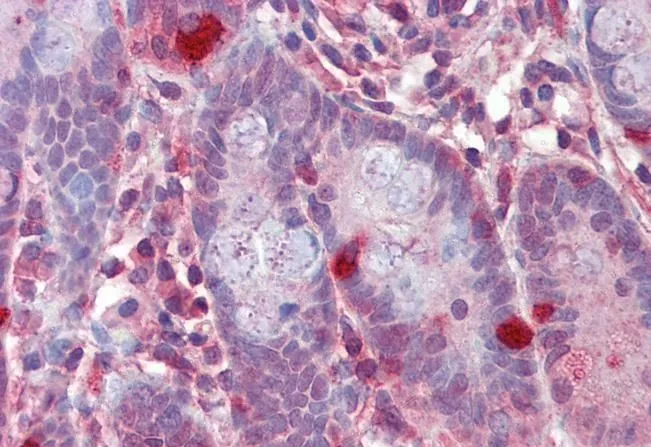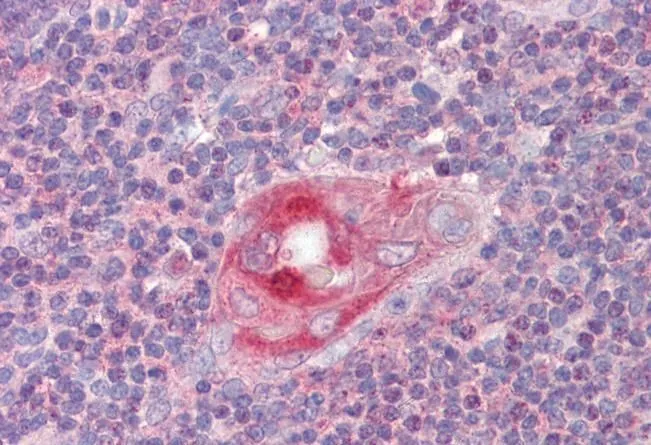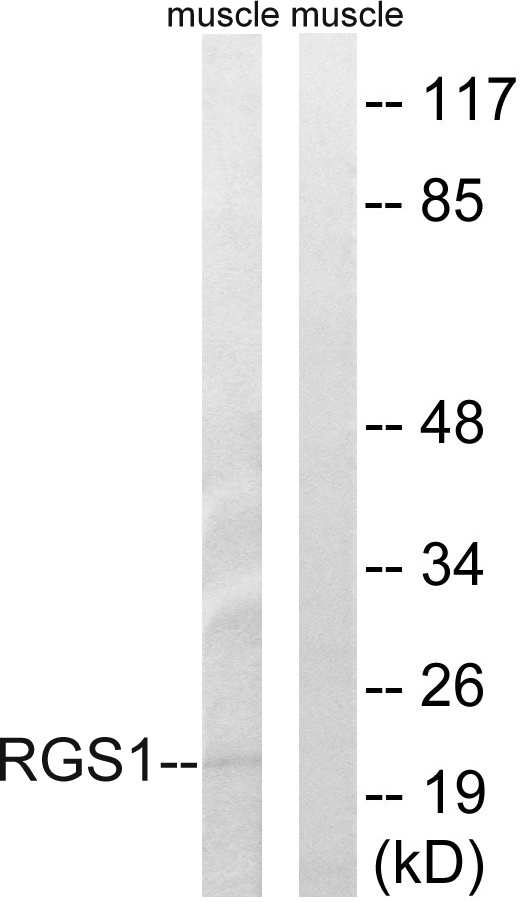
WB analysis of HepG2 lysate using GTX22715 RGS1 antibody. Dilution : 1microg/ml Loading : 30microg protein in RIPA buffer
RGS1 antibody
GTX22715
ApplicationsWestern Blot, ImmunoHistoChemistry, ImmunoHistoChemistry Paraffin
Product group Antibodies
ReactivityHuman
TargetRGS1
Overview
- SupplierGeneTex
- Product NameRGS1 antibody
- Delivery Days Customer9
- Application Supplier NoteWB: 0.5-2microg/ml. IHC-P: 2.5microg/ml. *Optimal dilutions/concentrations should be determined by the researcher.Not tested in other applications.
- ApplicationsWestern Blot, ImmunoHistoChemistry, ImmunoHistoChemistry Paraffin
- CertificationResearch Use Only
- ClonalityPolyclonal
- Concentration0.50 mg/ml
- ConjugateUnconjugated
- Gene ID5996
- Target nameRGS1
- Target descriptionregulator of G protein signaling 1
- Target synonyms1R20, BL34, HEL-S-87, IER1, IR20, regulator of G-protein signaling 1, B-cell activation protein BL34, early response protein 1R20, epididymis secretory protein Li 87, immediate-early response 1, B-cell specific, regulator of G-protein signalling 1
- HostGoat
- IsotypeIgG
- Protein IDQ08116
- Protein NameRegulator of G-protein signaling 1
- Scientific DescriptionThis gene encodes a member of the regulator of G-protein signalling family. This protein is located on the cytosolic side of the plasma membrane and contains a conserved, 120 amino acid motif called the RGS domain. The protein attenuates the signalling activity of G-proteins by binding to activated, GTP-bound G alpha subunits and acting as a GTPase activating protein (GAP), increasing the rate of conversion of the GTP to GDP. This hydrolysis allows the G alpha subunits to bind G beta/gamma subunit heterodimers, forming inactive G-protein heterotrimers, thereby terminating the signal. [provided by RefSeq, Jul 2008]
- ReactivityHuman
- Storage Instruction-20°C or -80°C,2°C to 8°C
- UNSPSC12352203







